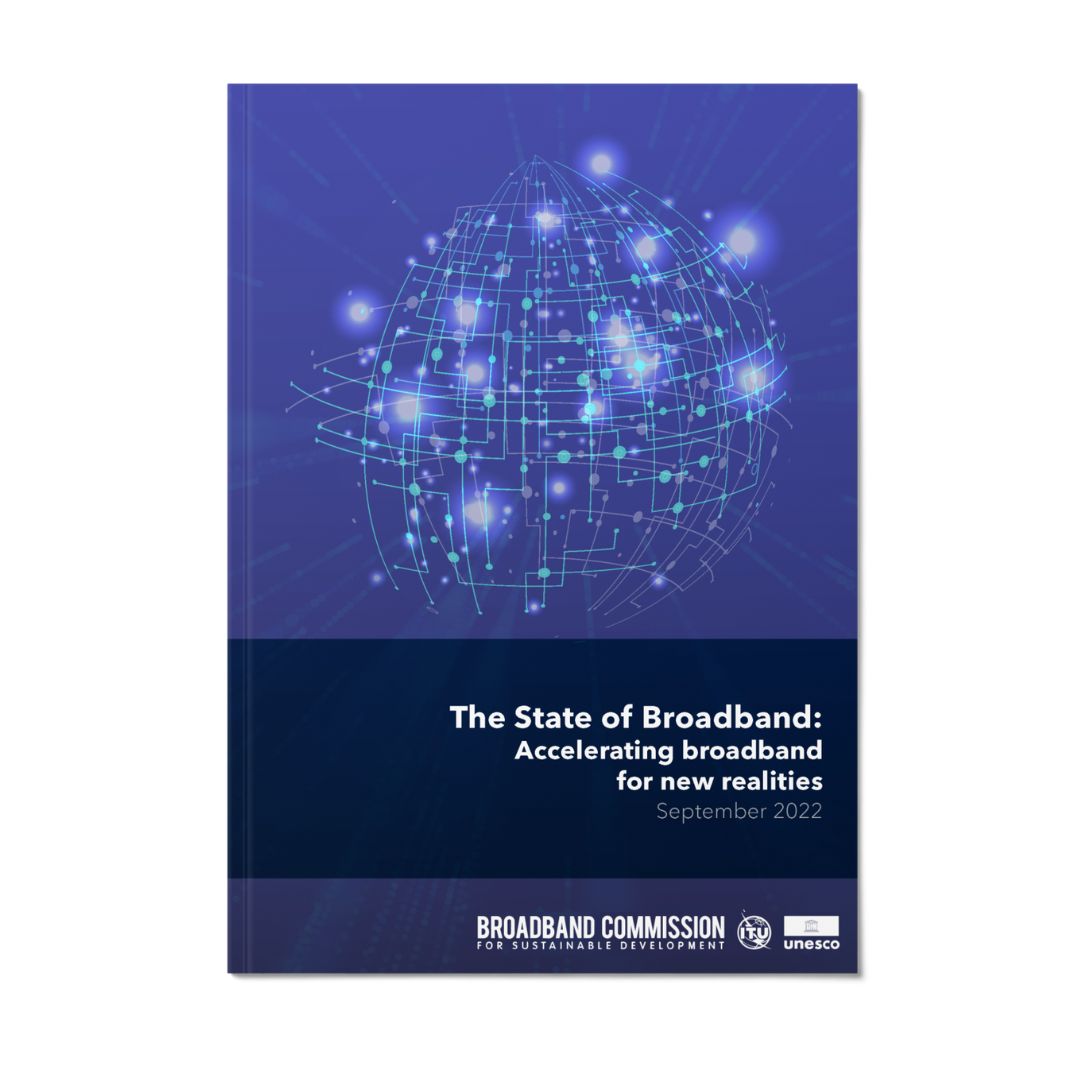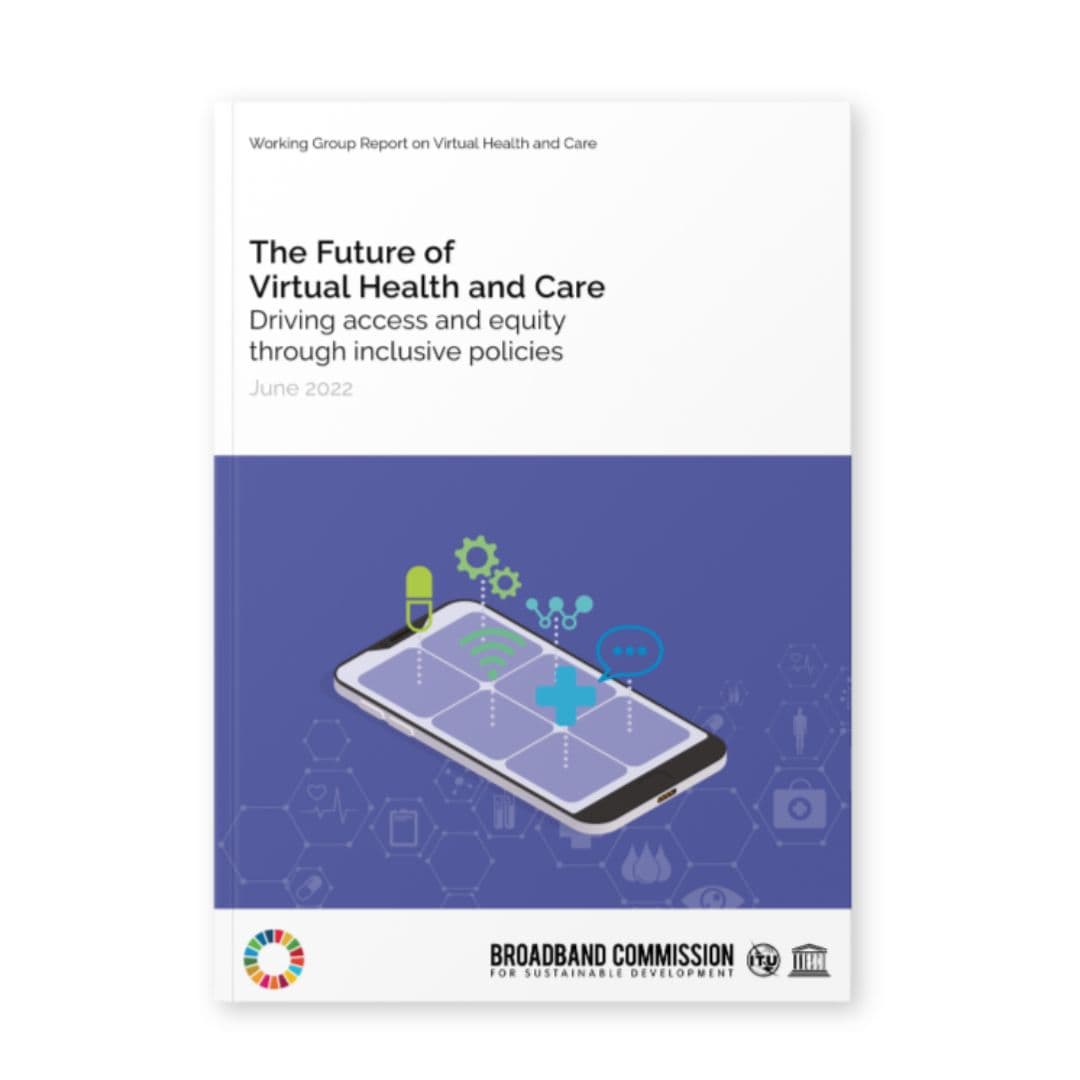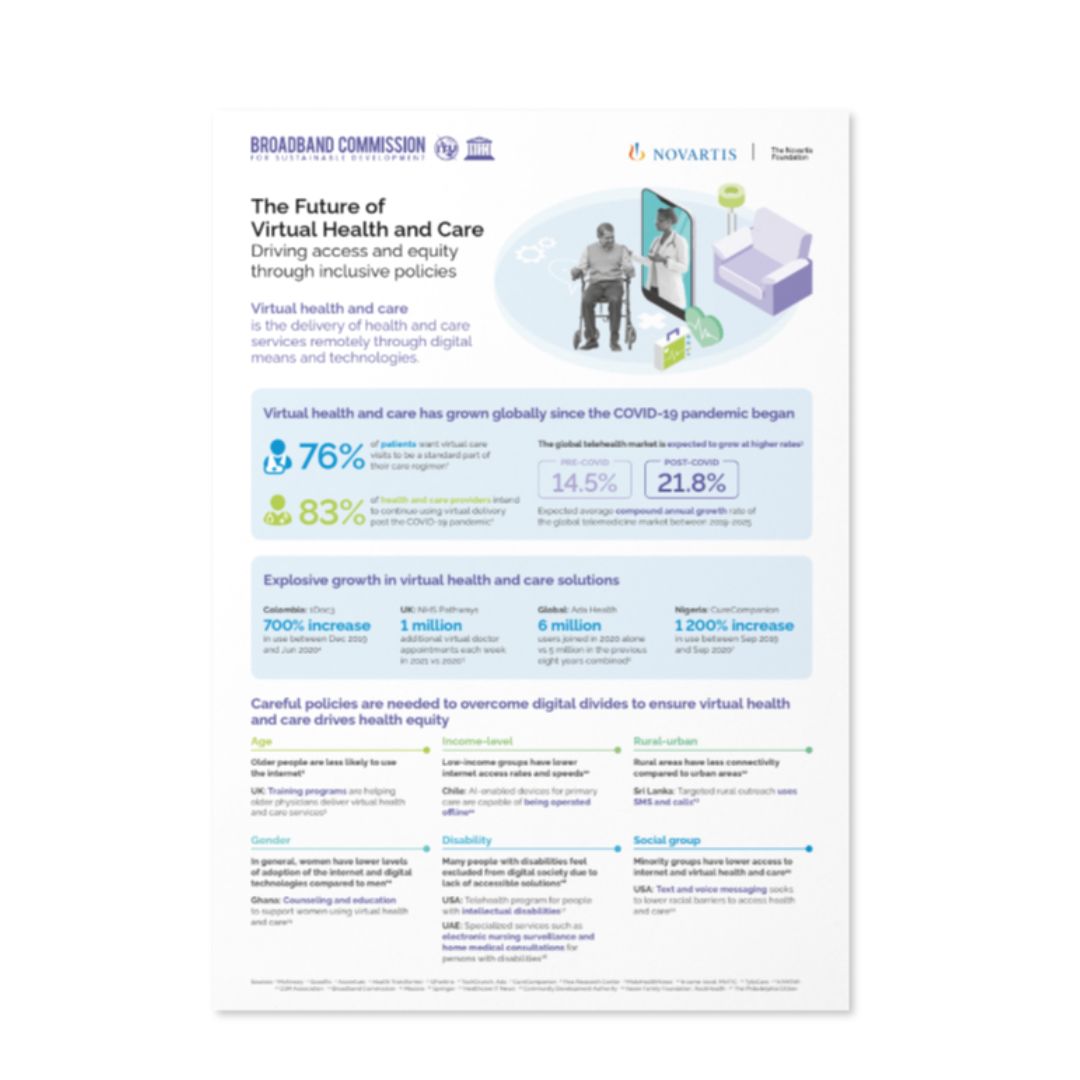The COVID-19 pandemic triggered a massive surge in virtual health and care delivery across the world, with many countries embracing hybrid virtual and in-person services. This year’s report from the Broadband Commission for Sustainable Development Working Group on Virtual Health and Care—co-chaired by the World Health Organization and the Novartis Foundation— analysed these developments in 23 countries, and emerged with a warning that health stakeholders need to act to prevent the increase of health inequities due to digital divides.
The use of virtual health and care is popular: surveys conducted in the US in 2021 show that over three-quarters of patients want virtual services to be a continuing part of their care, and over 80 per cent of providers intend to continue using virtual health after the COVID-19 pandemic has eased. But many countries have not yet developed coherent frameworks to ensure virtual health services work effectively alongside in-person care.
Careful policy-making is essential to ensure that expansion of virtual services happens in an equitable and inclusive way, and existing digital divides do not exacerbate health inequities. For example, in the US, 99 per cent of people between the ages of 18 to 29 are online. But one in four older people don’t use the Internet—the demographic for whom reliable healthcare access is often a matter of life and death.
African Americans of any age are almost twice as likely to lack access compared with the general US population. While in India, 67 per cent of people living in urban areas have Internet access compared with 32 per cent of people living rurally. And data collected across 34 countries in Africa show that women are less likely than men to have a smartphone, own a computer, or use the Internet. In Sweden, a country that ranks number one in The Economist’s Inclusive Internet Index, up to one in five people with a disability feels excluded from the digital society. Fortunately, there are pragmatic ways to ensure that virtual technology makes health more equitable rather than less.
The Working Group report, The Future of Virtual Health and Care: Driving access and equity through inclusive policies, highlights several policy areas that are emerging to close these gaps and provides the clearest guidance to date on how to ensure virtual technology can help make health and care accessible to all. These core policy recommendations target government decision-makers, and cover governance and regulation; design and processes; data and technology; business models; people and workforce; and partners and stakeholders.
But recognizing that policy-makers alone cannot advance virtual health and care in an inclusive way, the report also provides recommendations for how health and care providers, payers, private sector, advocacy groups, civil society, and researchers can complement policy-maker actions and ensure effective policy development and implementation.
Explore the report at: https://broadbandcommission.org/working-groups/virtual-health-and -care




